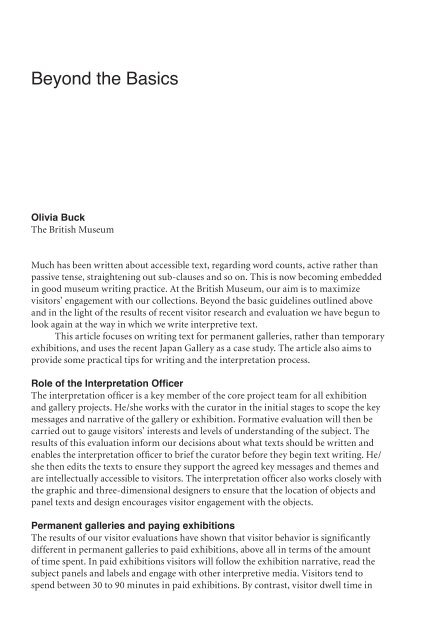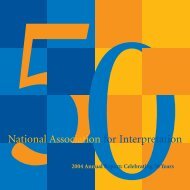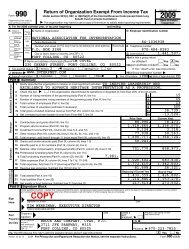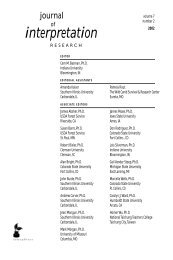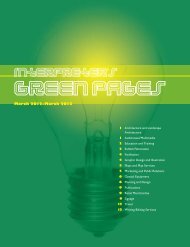interpretation
Volume 15, Number 1 - National Association for Interpretation
Volume 15, Number 1 - National Association for Interpretation
You also want an ePaper? Increase the reach of your titles
YUMPU automatically turns print PDFs into web optimized ePapers that Google loves.
Beyond the Basics<br />
Olivia Buck<br />
The British Museum<br />
Much has been written about accessible text, regarding word counts, active rather than<br />
passive tense, straightening out sub-clauses and so on. This is now becoming embedded<br />
in good museum writing practice. At the British Museum, our aim is to maximize<br />
visitors’ engagement with our collections. Beyond the basic guidelines outlined above<br />
and in the light of the results of recent visitor research and evaluation we have begun to<br />
look again at the way in which we write interpretive text.<br />
This article focuses on writing text for permanent galleries, rather than temporary<br />
exhibitions, and uses the recent Japan Gallery as a case study. The article also aims to<br />
provide some practical tips for writing and the <strong>interpretation</strong> process.<br />
Role of the Interpretation Officer<br />
The <strong>interpretation</strong> officer is a key member of the core project team for all exhibition<br />
and gallery projects. He/she works with the curator in the initial stages to scope the key<br />
messages and narrative of the gallery or exhibition. Formative evaluation will then be<br />
carried out to gauge visitors’ interests and levels of understanding of the subject. The<br />
results of this evaluation inform our decisions about what texts should be written and<br />
enables the <strong>interpretation</strong> officer to brief the curator before they begin text writing. He/<br />
she then edits the texts to ensure they support the agreed key messages and themes and<br />
are intellectually accessible to visitors. The <strong>interpretation</strong> officer also works closely with<br />
the graphic and three-dimensional designers to ensure that the location of objects and<br />
panel texts and design encourages visitor engagement with the objects.<br />
Permanent galleries and paying exhibitions<br />
The results of our visitor evaluations have shown that visitor behavior is significantly<br />
different in permanent galleries to paid exhibitions, above all in terms of the amount<br />
of time spent. In paid exhibitions visitors will follow the exhibition narrative, read the<br />
subject panels and labels and engage with other interpretive media. Visitors tend to<br />
spend between 30 to 90 minutes in paid exhibitions. By contrast, visitor dwell time in


